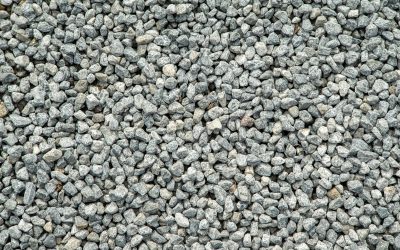Screen mesh blinding occurs when fines become stuck inside the holes of the screen media. Blinding of mesh prevents other fines from passing through the screen. As a result, efficiency is limited, production is reduced, and time will be needed to clean or replace the screen.
Vibratory screens are an increasingly common type of screener used across many industries. They are often used to screen difficult, wet materials or fines. When screening these types of materials, it’s not a question of if blinding will occur, but when it will occur.
Preventing screen blinding is crucial for productivity. We’ll share several tips to help you minimize blinding of your vibratory screener.
Optimize Screen Design
The design of your vibratory screen significantly impacts its efficiency. Start by tailoring the screen’s shape and configuration to your application. For example, sloped screens allow for faster material flow and higher throughput, and high-frequency or multi-deck screens are effective for separating fine materials or achieving multiple gradations in a single pass.
Choose a mesh size that balances throughput with the desired level of precision. Fine meshes are ideal for small particle sizes but are more prone to clogging, so materials prone to blinding may require self-cleaning screen options.
Perform Thorough Material Audits
In certain industries, like solid waste management, materials can (and often must be) audited before they can be screened. Even in other industries that typically do not perform a pre-screen audit, doing so may be beneficial for troublesome materials.
By auditing, it’s possible to identify and remove problematic materials before they even touch the mesh. This can also help identify process issues that may impact overall material quality.
Regularly Inspect Screen Media
Similar to audits, screen inspections can help catch a number of issues before they can become bigger problems.
When using a vibratory screener to screen difficult materials, it may be imperative to inspect screen media more regularly. With very fine wet materials, blinding can occur gradually over time. It can be difficult to catch this before it’s already impacting your machine’s efficiency.
Additionally, frequent quality-control sampling and sieve analysis can alert operators to sudden or gradual specification changes. The maintenance team can then check the screen media for signs of wear, including early screen blinding.
Replace Worn Media
While it may be tempting to get the most out of media, it often costs more in productivity than it does to replace worn media. Depending on the media type and material specifications, even modest screen wear can result in irregular material movement. Gradually, irregular movements result in both additional media wear and a higher potential for screen blinding.
Generally speaking, certain wear patterns, particularly in the case of wire cloth, can lead to a hole blowing through the media. In the long-term, routine inspections, maintenance, and preemptive replacement of worn media can save your operation time and money.
Install a Self-cleaning Device
Self-cleaning devices are often recommended when regularly screening difficult materials. These devices can help prevent screen blinding, and come in two varieties: top-side and bottom-side devices.
Bottom-side Self-cleaning Devices
There are two common types of bottom-side devices. The most common uses plastic rings as “sliders” that move radially around the underside of the mesh. The sliders tap trapped materials, dislodging them from the mesh. They can also simply shear off some trapped materials. Another common type of bottom-side cleaning device is a ball tray.
Ball trays use the vibration of the screen to bounce. As the balls bounce, they tap the underside of the mesh. By tapping the mesh, the balls free stuck fines and prevent fines from becoming stuck.
Top-side Self-Cleaning Devices
Top-side self-cleaning devices are less common than bottom-side devices. Typically, top-side devices are used with very fine and dry materials. In this case, standard ring sliders and ball trays are ineffective at preventing blinding.
The most common top-side cleaner provides a lightweight scrubbing action on the screen’s surface to keep dry materials from sticking to the mesh.
While both bottom and top-side cleaning devices are effective, they add another level of complexity to an operation. Each type of device has its own associated costs, including maintenance.
Minimize Screen Blinding With The BIVITEC®
The BIVITEC® screen was designed as the optimal solution for handling difficult materials.
While vibratory screens are the go-to for screening higher moisture materials, they are prone to blinding. To overcome this limitation, the BIVITEC® uses high frequency, dual-vibratory forces to reduce plugging and blinding.
By utilizing highly flexible polyurethane screen mats, the screening surface is dynamically tensioned and relaxed, transferring energy horizontally and vertically. This results in a “popping” effect on the material, helping prevent screen blinding.
If screen blinding is an issue for your screens, contact us to learn how the BIVITEC® can benefit your operation. Ready to take the next step? Reach out for an equipment quote.


